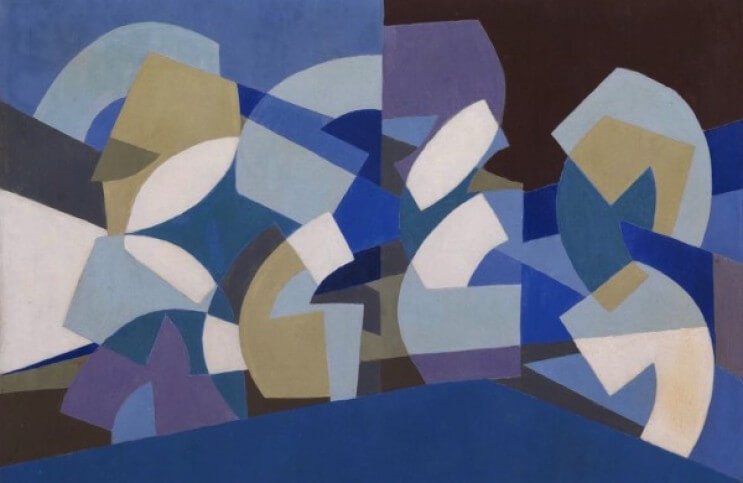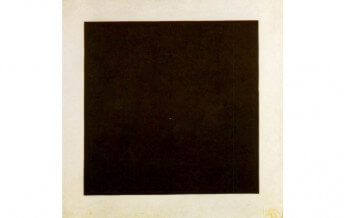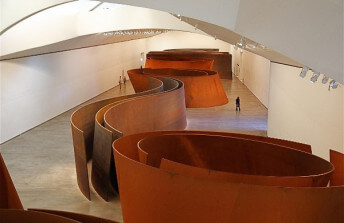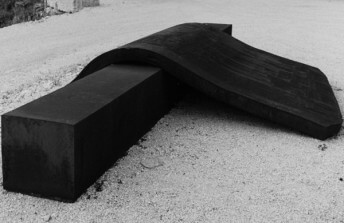The Important Legacy of Saloua Raouda Choucair
Apr 28, 2017
Years ago on a visit to Beirut, Dia Art Foundation Director and former Tate Modern curator Jessica Morgan saw some work in a gallery by an artist she did not recognize. She inquired about it and was informed it was by a Lebanese artist named Saloua Raouda Choucair. After learning the artist was still active in her studio, Morgan paid Choucair a visit. Upon arriving she was shocked to behold what seemed to be an entire lifetime worth of paintings, sculptures, jewelry and tapestries. Choucair had been working diligently for more than half a century in almost total isolation. She had studied at the École nationale supérieure des Beaux-Arts in Paris in the late 1940s, and at that time she had also exhibited in avant-garde Parisian galleries and salons. And even after returning to Beirut she had continued exhibiting, becoming well respected locally. But in her whole life she had sold almost no work, and was barely known outside of Lebanon. Jessica Morgan immediately recognized the work Choucair had been doing as unique and pioneering, and in 2013 co-curated an ambitious retrospective exhibition of her career at the Tate. All of the works in the exhibition came directly from that studio back in Beirut. By the time the exhibition opened, Choucair was 96 years old and experiencing the advanced effects of Alzheimer's disease. Just a few years later, on 26 January 2017, she passed away. But thanks in part to that retrospective, her work is finally receiving the recognition and respect it deserves as audiences around the world awake to an oeuvre that timelessly expresses the universalities Saloua Raouda Choucair perceived as an enlightened citizen of the world.
Geometric Duality
Saloua Raouda Choucair was born in Beirut in 1916, and began painting at the age of 19. She initially began as a figurative artist, painting brightly colored images of daily life that demonstrated an urge toward modernist realism. But after touring the streets of Cairo once, she became enthralled by the language of forms used in the Islamic art and architecture she saw, and for the first time felt compelled to explore abstraction. In an interview for a film accompanying her Tate exhibition, Choucair said, “All the rules that I apply are from the Islamic religion and from Islamic geometric design.” But rather than utilizing the Islamic aesthetic language in its usual religious and social context, she re-contextualized the forms as components of a new, poetic visual vocabulary.
One way Choucair explored her new visual poetry was through the realization of interlocking forms. Both in her paintings and her sculptures, she created biomorphic abstract elements that fit together, sometimes as though previously separated by natural forces, and sometimes as though spooning together like lovers. One such series she created in the late 1970s was called Dual. Some of the individual forms in the Dual series seem almost to evoke the calligraphic marks common in Arabic writing. But they are abstracted and softened in such a way that they also evoke the shapes of creatures, or plants, or even human features snuggling together harmoniously.
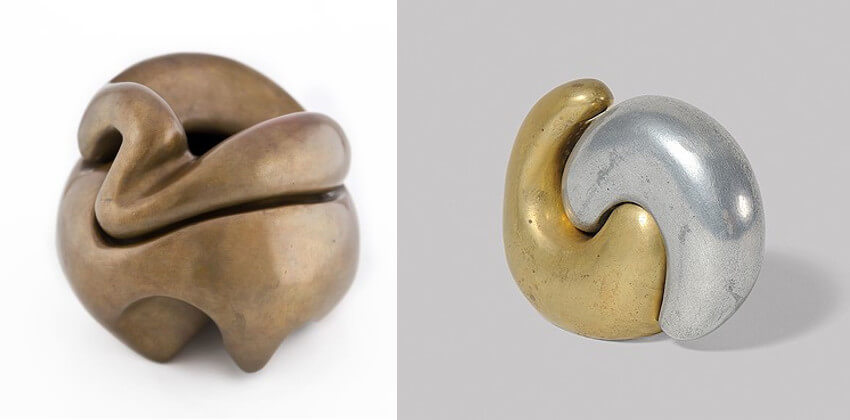 Saloua Raouda Choucair - two pieces from the Dual series, 1978-80, © Saloua Raouda Choucair Foundation
Saloua Raouda Choucair - two pieces from the Dual series, 1978-80, © Saloua Raouda Choucair Foundation
Perfect Towers
Another way Choucair explore her personal, poetic, abstract, geometric language was through the use of towering forms. Often her towers consisted of stacks: multiple geometric pieces that interlock together to create a unified vertical object. Many such stacks reflect the visual platitudes of the city, such as the vertical, hard-edged rectangles and squares of the apartments and office buildings readily visible throughout Beirut. Other towers she created are less urban in their appearance, reflecting an expression of the natural world, such as complex, mushroom-like forms, or forms that evoke the skeletal form of a nut, or eroded, rocky crags.
Two elements resonate throughout her entire oeuvre, regardless how her work materializes, and those are a sense of rhythm and unity. Even the pieces of her stacking towers, though they are each unique and made by hand, each speak in a poetic meter with their counterparts. They build toward an expression of something larger than the individual pieces. And her biomorphic pieces, whether they stand alone or feature multiple nesting pieces, express a natural rhythm, unifying the idea of modern built objects with something primitive and spontaneous.
Causes of Invisibility
Part of the reason the work of Saloua Raouda Choucair remained so long hidden from the world outside of Lebanon has to do with her decision to return to her home country after studying in Paris. For almost the entire second half of the 20th Century, Lebanon was in a state of social fragility that shrouded much of its modern culture. After the Nakba, or first Palestinian exodus, sent more than half a million Palestinian refugees into nearby countries, the religious and cultural balance of Lebanon shifted drastically. Those difficult conditions fomented for decades until 1975, when the 15-year long Lebanese Civil War broke out.
Nonetheless, regardless of personal or political stresses Choucair remained dedicated to her work. Without concern for accolades she committed herself to creating a prolific and truly unique oeuvre. And despite being overlooked by the rest of us, she did affect her own culture profoundly. Her 1947 exhibit at the Arab Cultural Gallery and her 1952 exhibit at Saint Joseph University, both in Beirut, are considered the first two modern abstract art shows in the Middle East. Now that the rest of us have finally realized her contribution, it is a pleasure to acknowledge her pioneering efforts as well as the universalities she expressed in her work.
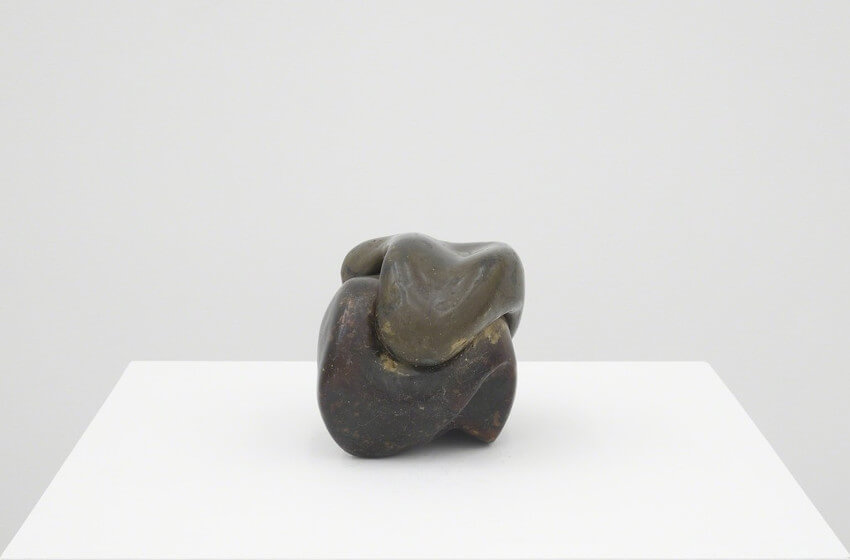 Saloua Raouda Choucair - Dual, 1975-1977, Fiberglass, CRG Gallery, New York, © Saloua Raouda Choucair Foundation
Saloua Raouda Choucair - Dual, 1975-1977, Fiberglass, CRG Gallery, New York, © Saloua Raouda Choucair Foundation
Featured image: Saloua Raouda Choucair - Composition in Blue Module (detail), 1947-51, Oil paint on canvas, © Saloua Raouda Choucair Foundation
All images used for illustrative purposes only
By Phillip Barcio
